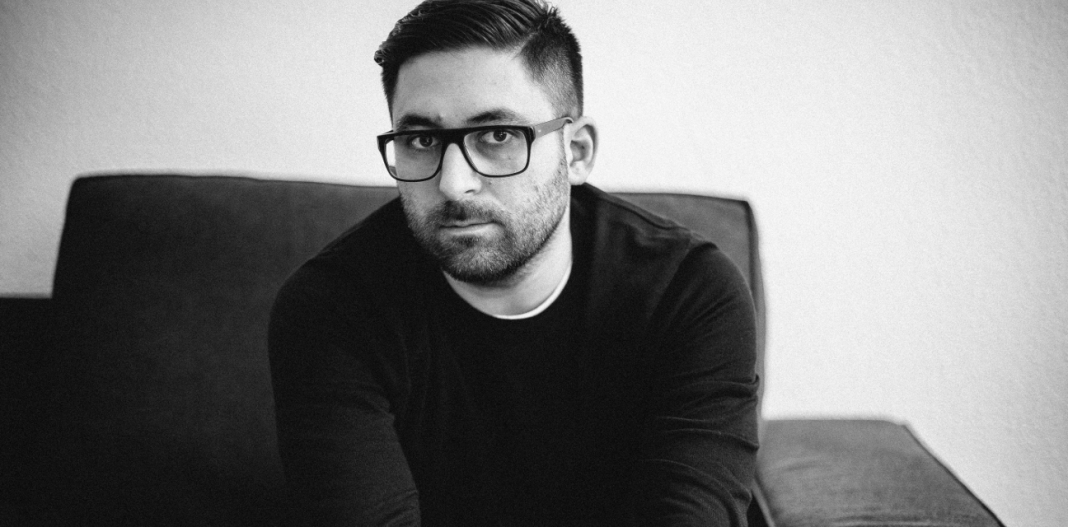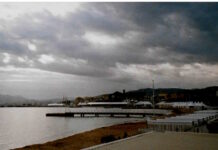Photo: Press (Cosmin TRG)
Cosmin TRG is a restless producer if there ever was one. A decade after his first release came out on Hessle Audio, Cosmin Nicolae has now more 50 releases under his belt. But it’s not its quantity alone that makes his back catalogue as impressive as it is, it’s also Nicolae’s stylistic evolution which makes his massive output feel even broader. Moving from Dubstep to House and Techno with the occasional detour around the fringes of electronic music, Cosmin TRG has continuously reinvented his sound. It’s thus no surprise that he would also create platforms on which he can combine his music with his passion for visual art. After founding Fizic in 2014, Nicolae launched the white-label imprint Sportiv last year. Before he returns with a 90s-inspired EP on Sportiv, Cosmin TRG opens his vaults wide for his contribution to our Groove podcast: His mix comprises exclusively his own productions, most of which are yet unreleased.
You’ve released your first EP on Hessle Audio as the label’s first catalogue number when Dubstep was still in full swing. What’s your relationship with Dubstep like these days?
It’s one of nostalgia. It was a pivotal moment in electronic music that I was happy to be a small part of. The range of sounds within the genre made it very exciting and in many ways it was music that captured the zeitgeist. The conditions that made Dubstep possible are not around any more, the world is a different place and sonically, there is an entirely new environment.
In the same year, you’ve released a track which was cheekily called “Your Friends Like Techno” whereas nowadays, you’re mostly recognised as a Techno producer. What got you into Techno in the end?
To be fair it was meant to be more appreciative rather than cheeky. I loved Techno and always looked into a bridge between genres. The execution of the idea wasn’t too on point in that track, there’s a bit too much going on – no idea what the sample from” Apocalypse Now” was supposed to do – but there are more refined takes in later tracks like “Less Music” on Tube 10 and “Losing Marbles” with Dub U on Hotflush the following year. I veered more and more into Techno when it aligned with my musical tastes and returned to it’s industrial/warehouse spirit.
Your new EP on your own Sportiv hints at a 90s influence, most notably on the A-side, “Afterburn”, while the B-side works with tape saturation, making it seem somewhat nostalgic. Did you deliberately aim for a certain sound aesthetic?
I do occasionally revisit times when Techno was raw and functional, which in many ways made it future-proof. I don’t think it’s nostalgic to go back to Downwards or Sandwell District records, sometimes it’s almost imperative to keep their spirit alive. There’s a lot of disposable music being pushed in the arena and it’s vital to remember the things that made this music exciting and futuristic in the first place.
With Fizic, you had launched your own label already in 2014 as a platform for your own productions but you have opened it for other artists earlier this year. What are your plans with the label?
Fizic is still a very young label finding its feet, its context. Initially, this was going to be my playground, but I thought it would be really important to open it to other artists, with an emphasis on dance music from the fringes of Techno. The record from Serb is a prime example, it’s intense music that doesn’t necessarily address the dance floor but takes inspiration from it. It’s exuberant and passionate. There will be more records from him coming soon, and also from other producers from Romania. I’d be happy to offer Fizic as a platform for them, as they need more exposure.
Unlike the minimalistic aesthetics of Sportiv, Fizic puts an emphasis on elaborate artworks and pairs up the music with atmospheric photography or abstract painting, some of which are your own. What’s the connection between your visual art and your music?
I did the photography and painting for all releases so far, as it seemed like a natural outlet for me to express my vision in the visual domain. It’s a constant (re)search. I’m both an actor and an observer, I like getting involved in all aspects of art that interest me. I think an obsession with detail and texture is the thin red line that unites my music and my visual work.
As a producer, you’re primarily interested in moods and atmospheres. What are you looking for in a DJ set as a music fan?
I look for a narrative arc, shifting moods, a very palpable sensory experience.
What was the idea behind your contribution to our Groove podcast?
I’ve been working on a lot of new material that’s quite diverse in range, and thought it’s time to showcase that. Some of the tracks in the mix are released on Fizic and Sportiv, connecting the dots with the new, unreleased material.
Last but not least: Where can we see you behind the decks – and what are your plans as a producer and label owner?
Seems like long way from now, but trust me it’s around the corner – Berghain December 16, and before that the usual places in the Euro circuit. I’m doing my second label night, Club Sportiv, at Control in Bucharest with Ron Morelli October 27. I aim to release more music from myself and the people close to the labels, a tape compilation with Bucharest-based producers, a collection of experiments under my own name, and perhaps some other unexpected sounds under an alias.
Stream: Cosmin TRG – Groove Podcast 121
No track list available.





